Abbey Tour
This part of the tour includes the oldest areas of the monastic complex: the monastic cloisters with the Paradise Courtyard, the Chapter Hall, the Romanesque halls, and the two monastic refectories — the winter and summer refectory.
This part of the tour includes the oldest areas of the monastic complex: the monastic cloisters with the Paradise Courtyard, the Chapter Hall, the Romanesque halls, and the two monastic refectories — the winter and summer refectory.
The cloisters, originally Romanesque cross corridors measuring 40 meters in length, were reconstructed at the turn of the 16th and 17th centuries. Their interior walls still preserve the Romanesque ashlar masonry made of opuka. In the eastern part, the entrance to the Romanesque Chapter Hall is partially reconstructed. At the corners, some frescoes by Siard Nosecký from 1727, depicting scenes from the life of St. Norbert, are preserved.
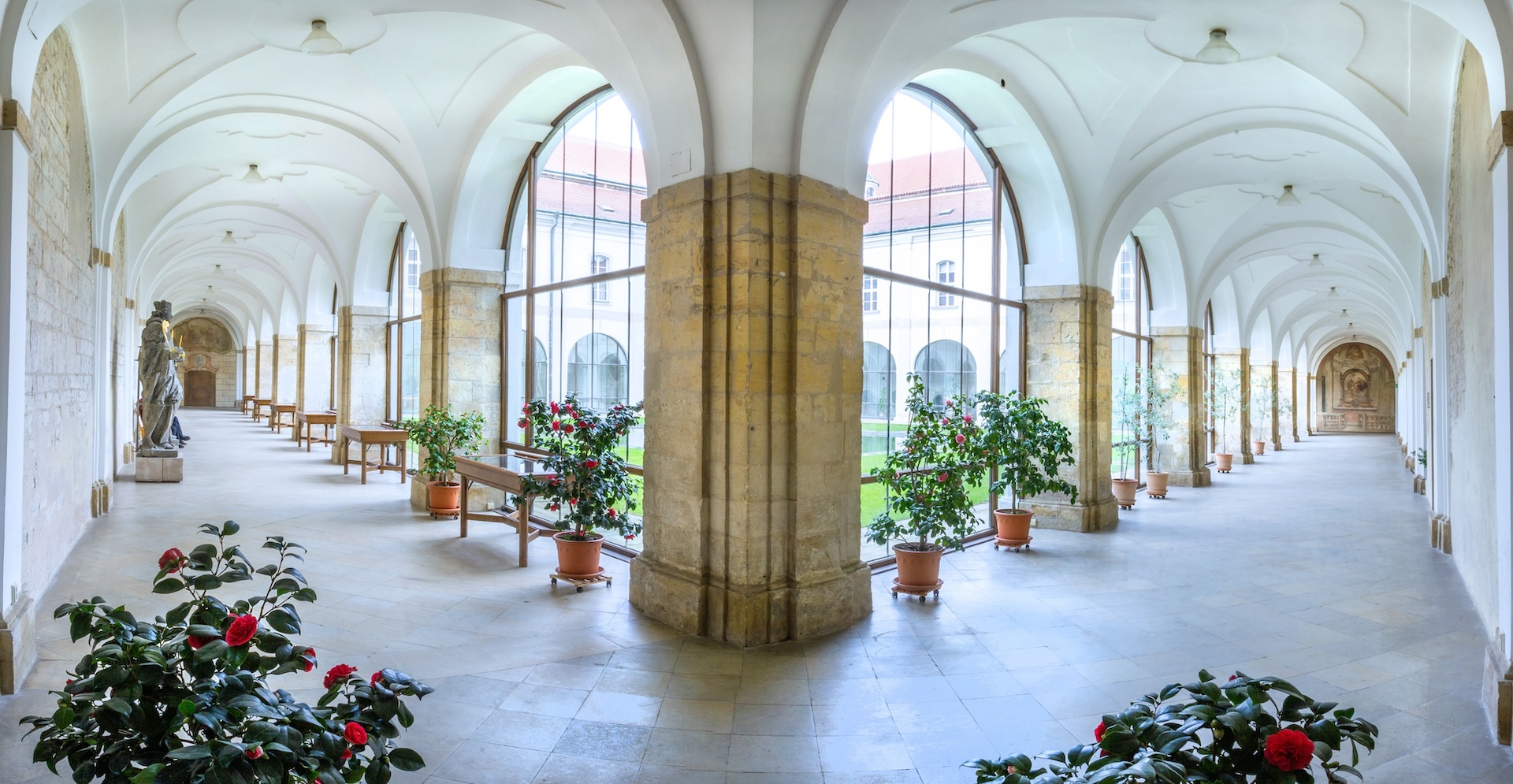
The Paradise Courtyard features a unique trapezoidal cistern measuring 13 x 11 meters at its center. Its Romanesque foundations were discovered in the 1950s. The cistern was reconstructed in the early 1990s and is supplied with water from the historic monastery aqueduct.
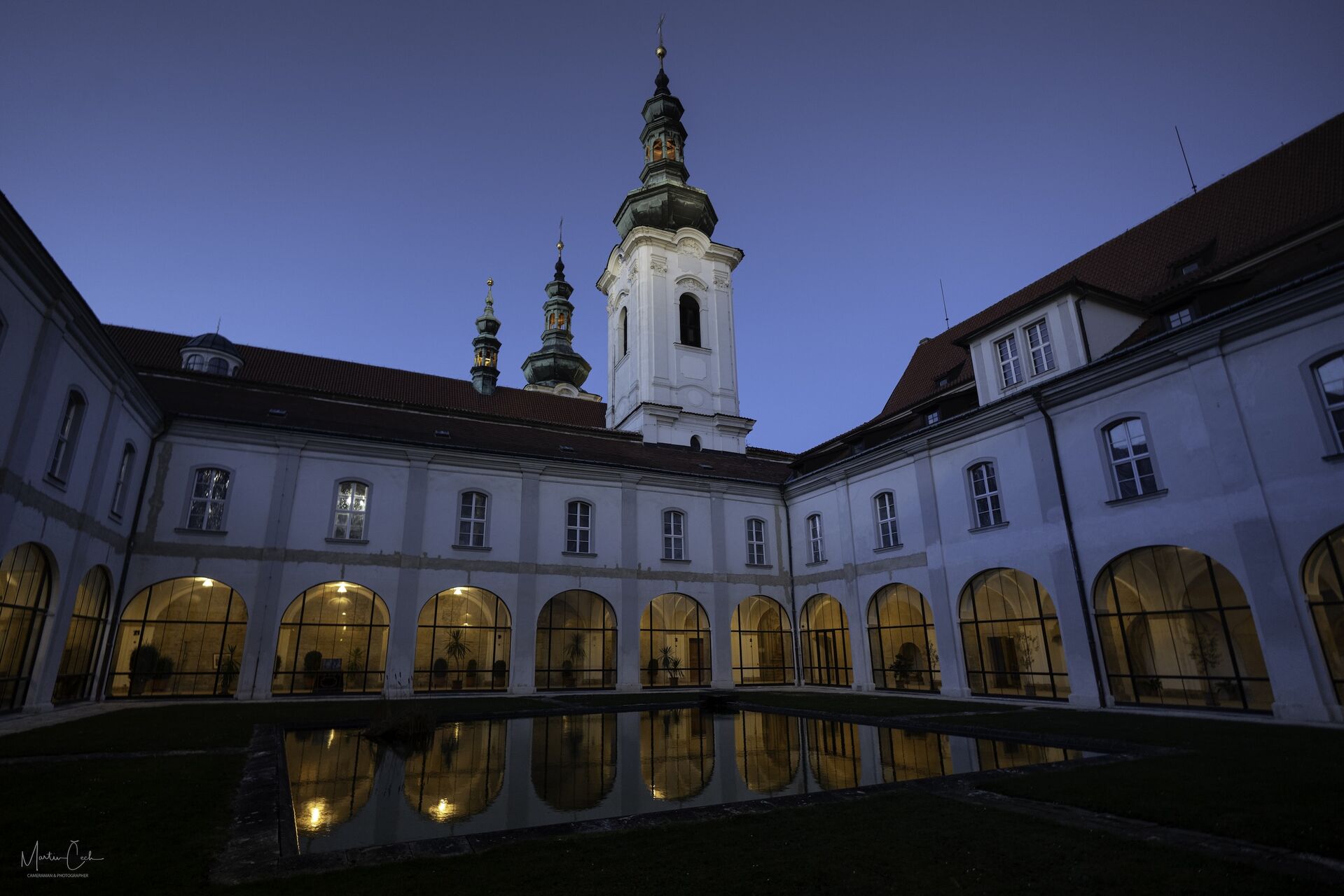
The Chapter Hall was built between 1750 and 1753 after the original Romanesque hall, which was damaged during the bombing of Prague by French troops in 1742, was demolished. The vault is covered by a fresco by Siard Nosecký depicting "Arise and Walk – The Healing of the Sick at the Pool of Bethesda."
The altar features a painting "Blessed Hermann Joseph before the Virgin Mary," created based on a template by A. van Dyck. The walls are adorned with a cycle of hanging paintings by Franz Lichtenreiter: Saint Norbert; Blessed Gertrude; Blessed Milo; Blessed Gerlak; Saint Siard; Saint Gottfried; Saint Augustine.
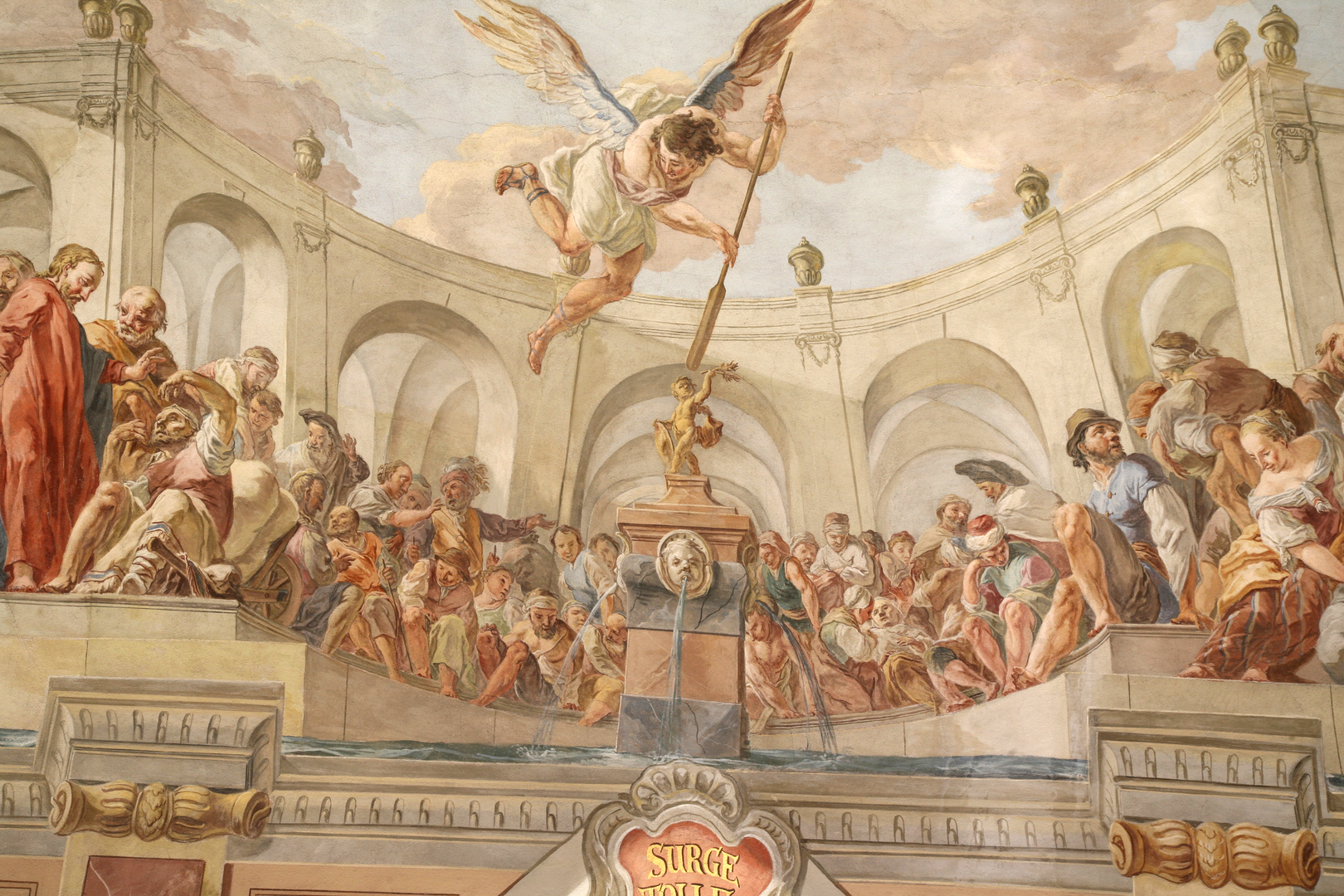
The Romanesque Halls were formerly the monastery's cellarium, or food storage area. Originally a two-aisled space from the turn of the 12th and 13th centuries, it was restructured in the Renaissance style at the beginning of the 17th century and vaulted with a Baroque arch between 1671 and 1674. The halls were renovated to their current condition in 1950.
In the first of these halls, there is a detailed model of the entire monastery complex at a scale of 1:100. The second hall is dedicated to the Premonstratensian Order, covering the origin and development of the Strahov Monastery. Photographs with audio commentary provide insights into the monastery, including the cloister, which is the part not accessible to the public and reserved exclusively for members of the order.
The third part of the exhibition features a series of monumental paintings by J.J. Hering from the early 17th century depicting scenes from the life of St. Norbert, the founder of the Premonstratensian Order. Also displayed are artifacts used once every fifty years during the celebrations of the transfer of his relics to Prague.
The Summer Refectory is a dining hall designed in 1691 by the Burgundian architect Jean Baptiste Mathey. Around the walls, there is a portrait gallery of paintings from the late 17th century featuring notable figures from the Strahov Monastery. A lectern used for reading during meals is hung on the wall. The ceiling is adorned with a fresco by the Premonstratensian monk and painter Siard Nosecký (1693-1753), depicting the "Heavenly Banquet of the Righteous with Christ as the Host," created between 1743 and 1745.
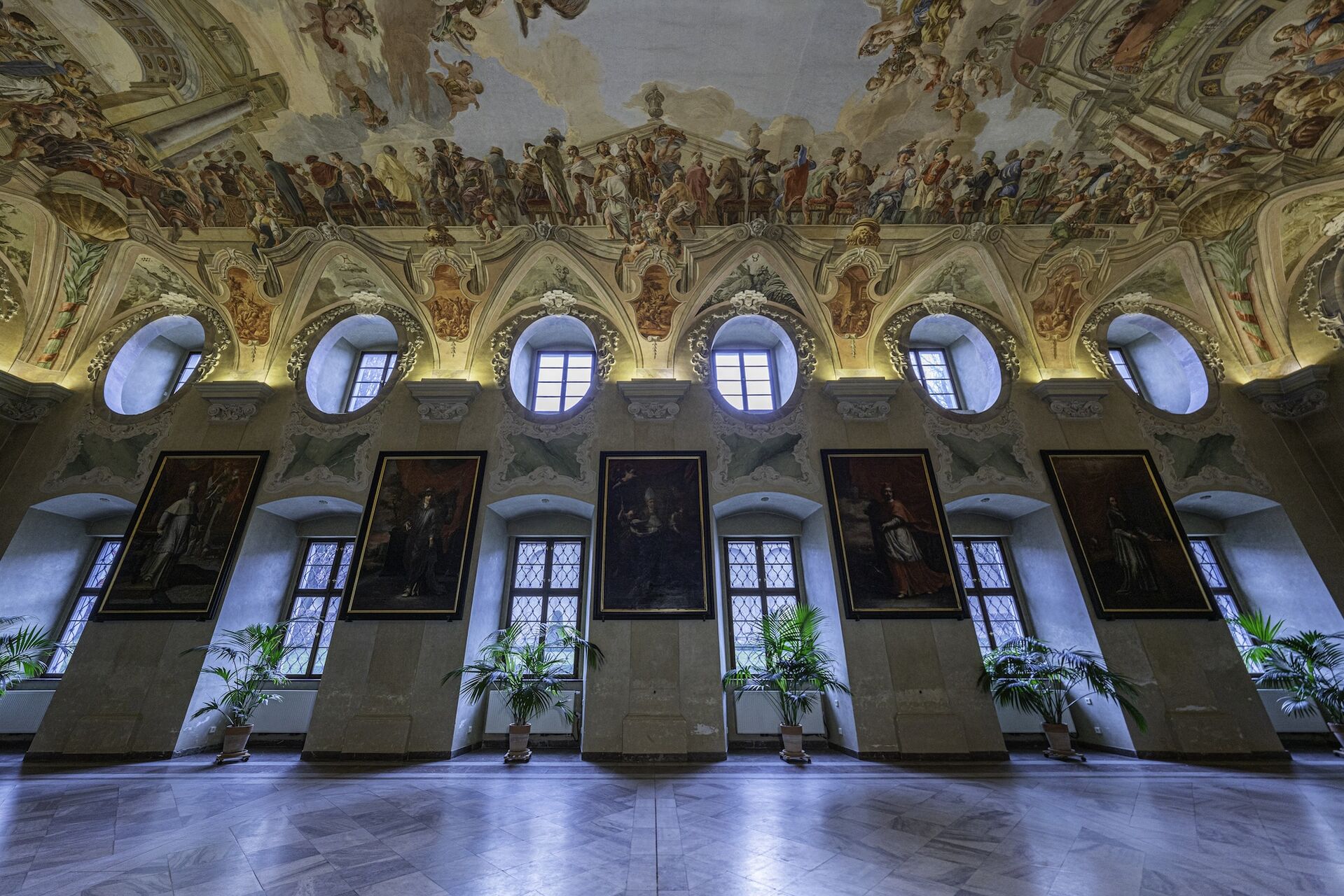
The Winter Refectory is a dining hall constructed at the end of the 17th century for the dining of convent members during the heating season. The hall's vault is covered with stucco decoration, and on the front wall, there is a large painting by Jan Jiří Heinsch (1647 – 1712) depicting Christ ministered by angels after fasting. This painting was originally created for the refectory of the Jesuit professional house on Prague's Lesser Town. It was moved to Strahov at the end of the 18th century.
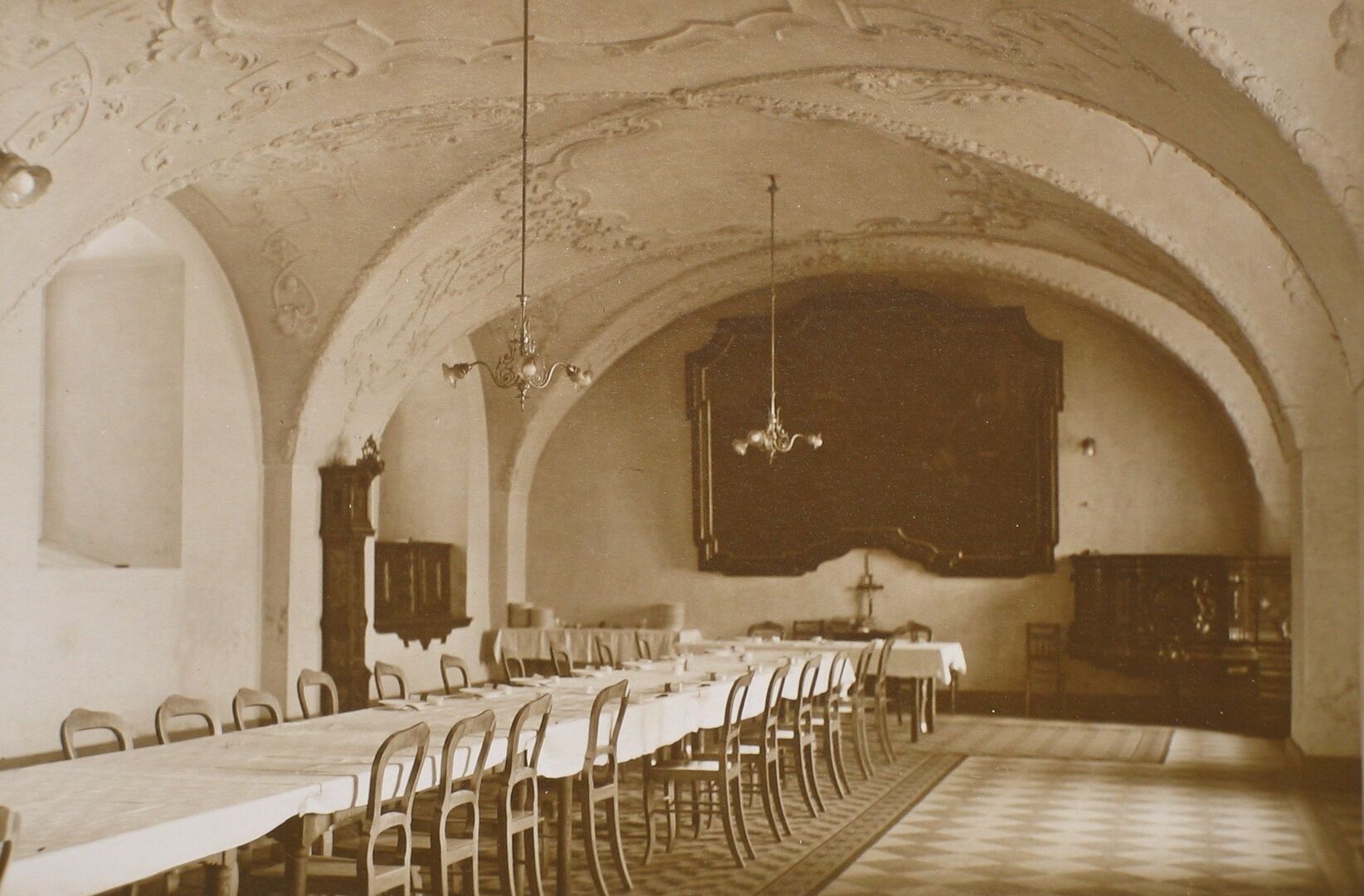
These premises can only be visited as part of the Joint Tour, which includes the Library, Gallery, and these areas. If there is an exhibition in the Abbey, it is held in these premises, making it possible to visit them as part of the exhibition entry.
| Monday - Sunday | 9:00-17:00 |
|---|---|
| New Year's Eve (31. 12. 2024) | 9:00-12:00 |
| New Year (1. 1. 2025) | 12:00-17:00 |
| Christmas Eve (24. 12. 2024), Christmas Day (25. 12. 2024), Easter Sunday (31. 3. 2024) | Closed |
The Joint Tour of the monastery including Library, Art Gallery and Abbey premises can be purchased at this link: